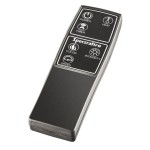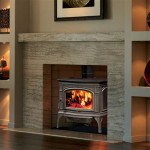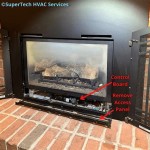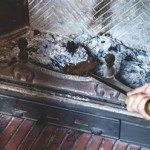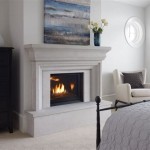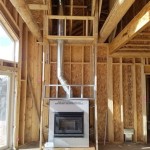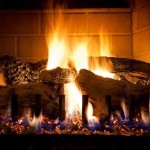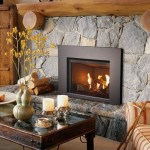Direct Vent Fireplace Installation: A Comprehensive Guide
Direct vent fireplaces have become a popular heating solution for homeowners due to their efficiency, safety, and aesthetic appeal. Unlike traditional fireplaces that rely on chimneys, direct vent fireplaces draw combustion air from outside and vent exhaust gases directly outside as well, eliminating the need for a conventional chimney. This closed combustion system enhances safety and reduces heat loss, resulting in a more efficient and cost-effective heating option. Proper installation, however, is crucial to ensure the fireplace operates safely and efficiently. This article provides a comprehensive guide to direct vent fireplace installation, covering key considerations, preparation steps, installation procedures, and safety protocols.
Understanding Direct Vent Fireplace Systems
A direct vent fireplace system is a closed combustion appliance that utilizes a specialized venting system. It differs from traditional fireplaces, which rely on natural draft and chimneys for ventilation. The key components of a direct vent system include the fireplace unit itself, a dedicated venting system, and often a gas line connection. The venting system typically consists of two concentric pipes: one that brings fresh air from outside into the combustion chamber, and another that expels exhaust gases back outside. This design prevents indoor air from being used for combustion, minimizing heat loss and preventing the back drafting of dangerous gases like carbon monoxide into the home.
The benefits of direct vent fireplaces are numerous. They are significantly more energy-efficient than traditional fireplaces, as they do not draw heated air from the house for combustion. This closed combustion system creates a more stable and consistent flame, resulting in more complete combustion and reducing emissions. Direct vent fireplaces also offer greater flexibility in terms of installation location, as they do not require a pre-existing chimney and can be vented horizontally or vertically depending on the model and installation requirements. Furthermore, the sealed combustion chamber reduces the risk of fire hazards and carbon monoxide poisoning, making them a safer option for homeowners.
Before commencing installation, it is essential to understand the different types of direct vent fireplaces and their specific venting requirements. Some models are designed for vertical venting through the roof, while others can be vented horizontally through an exterior wall. Some models are designed as inserts, meant to fit into existing fireplace openings, while others are freestanding units. Understanding these distinctions is crucial for selecting the appropriate venting components and ensuring compliance with local building codes and manufacturer specifications.
Pre-Installation Preparation: Planning and Safety
Effective pre-installation preparation is critical for a successful and safe direct vent fireplace installation. This phase involves careful planning, obtaining necessary permits, and ensuring compliance with all relevant safety regulations. Neglecting these steps can lead to costly mistakes, safety hazards, and potential legal issues. Thorough preparation minimizes risks and ensures a smooth installation process.
The first step in pre-installation is to review the manufacturer's installation manual thoroughly. This document provides detailed instructions, diagrams, and specifications specific to the fireplace model being installed. It outlines the required clearances to combustibles, venting configurations, gas line connection requirements, and other critical information. Failing to follow the manufacturer's instructions can void the warranty and compromise the safety of the installation.
Next, it is crucial to obtain the necessary permits from the local building department. Building codes and regulations vary depending on the jurisdiction, and installing a fireplace without the required permits can result in fines and mandatory removal of the appliance. The permitting process typically involves submitting detailed plans of the installation, including the fireplace location, venting system layout, and gas line connection. The building inspector will review the plans to ensure compliance with safety codes and regulations. Once the plans are approved, a permit will be issued, allowing the installation to proceed.
Safety is paramount during the pre-installation phase. Before starting any work, disconnect the gas supply to the fireplace location. This can be done by turning off the gas valve at the meter or at the main gas line serving the house. It is essential to use a gas leak detector to verify that the gas supply is completely shut off. Wear appropriate safety gear, including safety glasses, gloves, and a dust mask, to protect yourself from potential hazards. Ensure adequate ventilation in the work area to prevent the accumulation of flammable gases or dust. Finally, keep a fire extinguisher readily available in case of emergencies.
Carefully inspect the fireplace unit and venting components for any damage prior to installation. Check for dents, scratches, or other signs of damage that may have occurred during shipping or handling. If any damage is found, contact the manufacturer or supplier immediately to arrange for a replacement. Ensure that all necessary tools and materials are readily available before commencing the installation. This includes hand tools, power tools, measuring tools, venting components, gas line fittings, and sealant. Having all the necessary equipment on hand will streamline the installation process and minimize delays.
Installation Procedures: Step-by-Step Guide
The installation of a direct vent fireplace involves several key steps, including positioning the fireplace unit, installing the venting system, connecting the gas line, and testing the system. Each step requires careful attention to detail and adherence to the manufacturer's instructions and local building codes. Proper execution of these steps is essential for ensuring the safe and efficient operation of the fireplace.
First, position the fireplace unit in the desired location, ensuring that it meets the required clearances to combustible materials. Consult the manufacturer's installation manual for specific clearance requirements, as they vary depending on the fireplace model. Use shims to level the fireplace unit if necessary and secure it to the floor or wall according to the manufacturer's instructions. Ensure that the fireplace unit is stable and securely mounted before proceeding to the next step.
Next, install the venting system according to the manufacturer's specifications. The venting system must be properly sized and configured to ensure adequate ventilation and prevent the back drafting of exhaust gases. Connect the venting sections together using the appropriate connectors and sealants, ensuring that all joints are airtight. Support the venting system adequately to prevent sagging or damage. Pay close attention to the venting termination point, ensuring that it meets the required clearances from windows, doors, and other building openings. The venting termination point must also be protected from snow and debris to prevent blockage.
Once the venting system is installed, connect the gas line to the fireplace unit. This task should be performed by a qualified gas fitter or plumber to ensure compliance with local gas codes and regulations. Use the appropriate gas line fittings and sealant to create a leak-proof connection. Pressure test the gas line to verify that it is free of leaks. Before connecting the gas line, make sure that the gas supply is turned off at the source. After connecting the gas line, turn on the gas supply and use a gas leak detector to check for leaks at all connections. If any leaks are detected, turn off the gas supply immediately and repair the leaks before proceeding.
Finally, test the fireplace system to ensure that it is operating correctly. Turn on the fireplace and observe the flame, ensuring that it is stable and consistent. Check the venting system for any signs of leakage or blockage. Use a carbon monoxide detector to verify that there are no dangerous levels of carbon monoxide being emitted from the fireplace. If any problems are detected, consult the manufacturer's troubleshooting guide or contact a qualified service technician for assistance.
After successfully completing the installation, thoroughly clean the work area and dispose of any debris. Educate the homeowner on the proper operation and maintenance of the fireplace, including how to light the pilot light, adjust the flame height, and clean the fireplace. Provide the homeowner with the manufacturer's installation manual and warranty information. Emphasize the importance of regular maintenance and inspection to ensure the long-term safety and efficiency of the fireplace.
It is important to note that these procedures are general guidelines and may vary depending on the specific fireplace model and local building codes. Always consult the manufacturer's installation manual and local building codes for detailed instructions and requirements.
Safety Considerations and Post-Installation Inspection
Safety is paramount throughout the direct vent fireplace installation process. Proper safety precautions can prevent accidents, injuries, and potential property damage. A comprehensive post-installation inspection is also essential to verify that the fireplace is installed correctly and operating safely.
During the installation process, always wear appropriate personal protective equipment (PPE), including safety glasses, gloves, and a dust mask. Use caution when working with power tools and follow all safety guidelines. Ensure that the work area is well-ventilated to prevent the accumulation of flammable gases or dust. Keep a fire extinguisher readily available in case of emergencies. Never smoke or use open flames near the fireplace or gas line.
After the installation is complete, conduct a thorough post-installation inspection to verify that the fireplace is installed correctly and operating safely. Check the fireplace unit for proper clearances to combustible materials. Inspect the venting system for any signs of damage, leakage, or blockage. Verify that the gas line connections are leak-proof. Use a carbon monoxide detector to ensure that there are no dangerous levels of carbon monoxide being emitted from the fireplace.
Before using the fireplace for the first time, familiarize yourself with the manufacturer's operating instructions. Learn how to light the pilot light, adjust the flame height, and shut off the fireplace in case of emergencies. Ensure that all family members are aware of the fireplace's safety features and operating procedures. Never leave the fireplace unattended while it is in operation. Keep children and pets away from the fireplace to prevent burns or other injuries. Regularly inspect and clean the fireplace to ensure that it is operating safely and efficiently.
It is also recommended to schedule a professional inspection of the fireplace by a qualified technician annually. A professional inspection can identify any potential problems that may not be apparent to the homeowner and ensure that the fireplace is operating safely and efficiently.
Gas Fireplace Venting Explained Heat Glo
.aspx?strip=all)
Benefits Of Direct Vent Fireplaces Regency Fireplace S
Gas Fireplace Venting Explained Heat Glo

Direct Vent Vs Natural Www Mygasfireplacerepair Com

What Are The Best Ways To Vent A Gas Fireplace Zoroast

Direct Vent B Gas Free S Mazzeo Stoves Fireplaces

Gas Fireplaces Direct Vent Vs Free Fine Homebuilding

What Is A Direct Vent Fireplace Fireplaces Learning Center

Fireplace Cover To Keep Cold Air Out

How To Select And Install A Gas Fireplace Log Set Fireplaces Direct Learning Center
Related Posts

